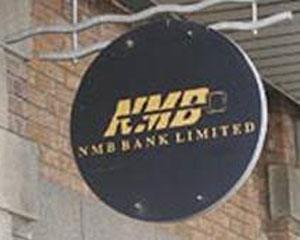
BY CHIEDZA KOWO
FINANCIAL services outfit NMB Holdings Limited says it is on track to achieve a US$30 million minimum capital target by December as directed by the Reserve Bank of Zimbabwe (RBZ) under a tight regulatory regime that revolves around building a stable financial system.
In a first quarter trading update released on Friday, company secretary Shumirai Pashapa said the listed group had already set the tone towards reaching the benchmark after surpassing a range of regulatory targets during the review period.
“All things being equal, the bank is confident that it will achieve the required minimum regulatory capital level for Tier 1 banks of US$30 million equivalent by the set deadline of 31 December 2021,” Pashapa said.
“The bank’s inflation-adjusted regulatory capital as at 31 March 2021 was $4,1 billion (historical cost — $2,5 billion) and is above the minimum required regulatory capital of $25 million.
“This translated to a capital adequacy ratio of 31,59% as at March 2021 (December 2020 – 39,51%) and this was significantly above the prescribed regulatory minimum ratio of 12%.”
The NMB chief spoke as the giant saw its inflation-adjusted total income rise by 42% to $930 million during the review period, from $655 million during the comparable period in 2020, bolstered by an inflationary charge that, although declining, has eroded the domestic currency’s buying power.
This scenario has been reported across sectors, and has forced many manufacturing firms to resort to measuring performance by looking at volumes trends.
- Chamisa under fire over US$120K donation
- Mavhunga puts DeMbare into Chibuku quarterfinals
- Pension funds bet on Cabora Bassa oilfields
- Councils defy govt fire tender directive
Keep Reading
NMB’s profit after tax moved to $296 million during the review period, from $113 million previously.
The group said the foreign currency auction system introduced by the RBZ last year would have a huge say in the direction the economy would take in 2021, after helping a volatile exchange rate stabilise throughout last year.
After ending the year at about US$1:ZW$83, the Zimbabwe dollar has given in recently, with the rate slowly creeping towards US$1:ZW$85 on the auction system.
NMB said authorities must scale up interventions towards maintaining the stability.
“We are hopeful that the exchange rate stability achieved so far will continue to prevail in order to create a conducive operating environment for businesses and the attraction of local and international capital in order to propel the much-needed economic growth for the country,” Pashapa said.
“The economy has remained relatively stable following the stability of the exchange rate in the second half of 2020 after the introduction of the RBZ-administered foreign exchange auction system on June 23 2020.
“The exchange rate stability has largely resulted in the significant easing of the country’s inflation, which stood at a year-on-year rate of 240,6% in March 2021 from a peak of 837,5% recorded in July 2020.
“We are hopeful that the monetary authorities will continue in their efforts to maintain the prevailing exchange rate stability which largely underpins the country’s economic stability and provides the required impetus for economic growth.”











